Just like the racetrack that was on the southern end of Westfield in the 1930s, another lost icon, the Westfield Airport, sits at the coordinates 40°36’36.0″N 74°19’08.4″W. Our research started here.
As with all Mr. Local History retrospectives, updates are made to this post when we learn additional information. We will continue to expand this post as information becomes available. Please feel free to post in the comments section anything that might add to history of this story or might have any photos to share.Mr. Local History Research Team
The Westfield, NJ Airport, originally known as Hadley Field, played an important role in early aviation history. Located in what is now a developed residential area in Clark and Edison, NJ, the airport was founded in the early 1920s, when aviation was still in its infancy near what was the Locust Grove Golf Club just off Lake Road in Clark. A speedway called the Clark Township Speedway would also pop up for a short time in the mid-1930s in the same area.
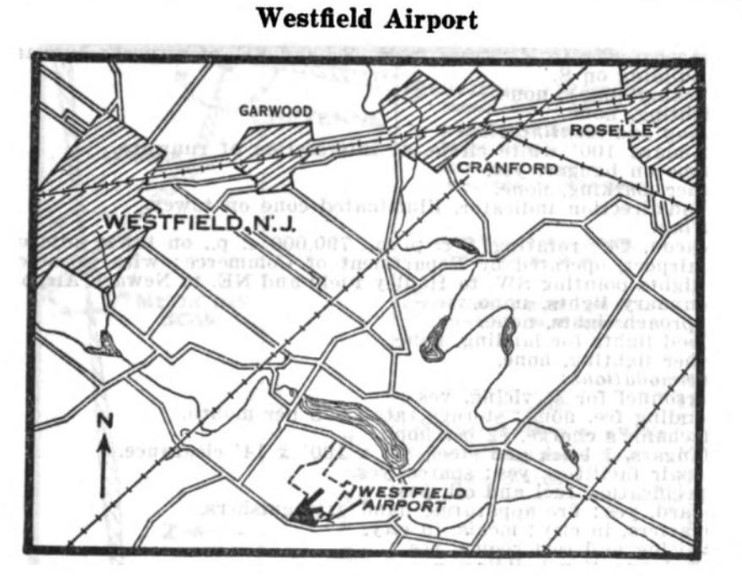
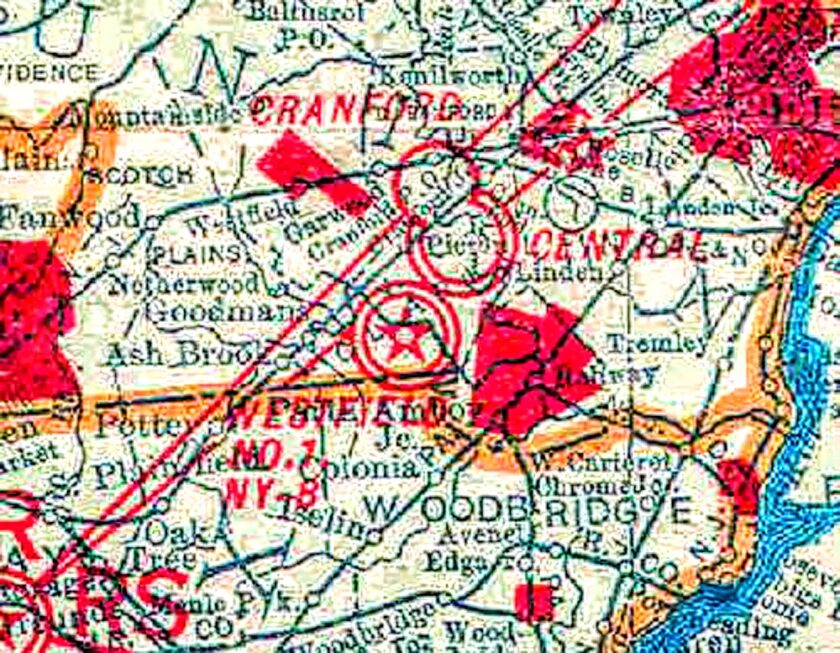
was on the 1930 Rand-McNally Air Trails Map
Origins and Early Years (1920s)
Hadley Field was established in 1924 by Paul Hadley, an aviation pioneer, to serve as a base for the burgeoning airmail industry. It became the official airmail hub for New Jersey, acting as a relay point for flights between New York and Washington, D.C. Before installing night navigation equipment at Newark Airport, Hadley Field was used as a major location for overnight mail stops.
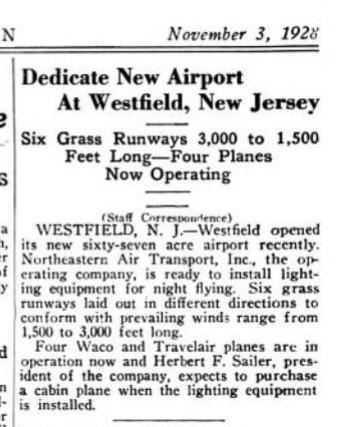
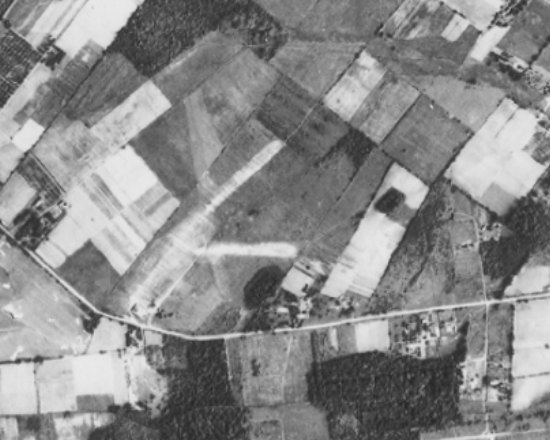
E.R. Crow, the owner of the former Westfield Ford agency on North Avenue in Westfield, helped select the site for the airport during the summer of 1928. He served as the Westfield Airport Corporation’s 1st president, while Alan Bruce Conlin was the airport’s lawyer. Westfield debuted its airport on October 21, 1928, although some newspaper clippings indicate it opened on March 31, 1929.
During this period, airmail services were crucial for delivering mail faster than traditional rail services. Hadley Field was unique for its nocturnal operations. Pilots often land here for a layover after flying across the dark skies, making it one of the few airports in the region with nighttime operations. At its start in 1928, Hadley Field (the Westfield Airport) had six grass runways. The airfield was relatively small compared to larger airports like Newark, and it primarily served airmail and small passenger planes, which didn’t require multiple runways or large landing areas.
Growth and Significance (1930s)
In the 1930s, the airport became one of the region’s busiest airmail centers. The airport was known for its flight training programs and recreational flying activities. In addition, as with most airfields of that time, the U.S. Postal Service’s reliance on Hadley Field cemented its role in developing early commercial aviation. As a growing airport, it also began to accommodate small passenger planes. It became a training ground for pilots, helping to foster the growth of aviation as a mainstream mode of transportation.
Research Gallery
Click any image to enlarge.
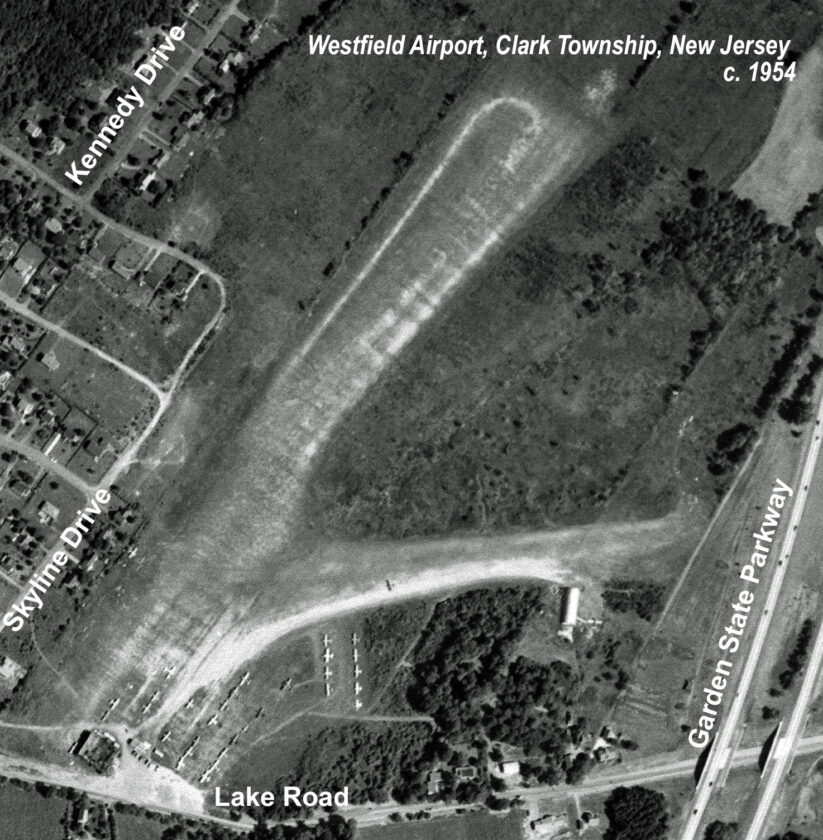
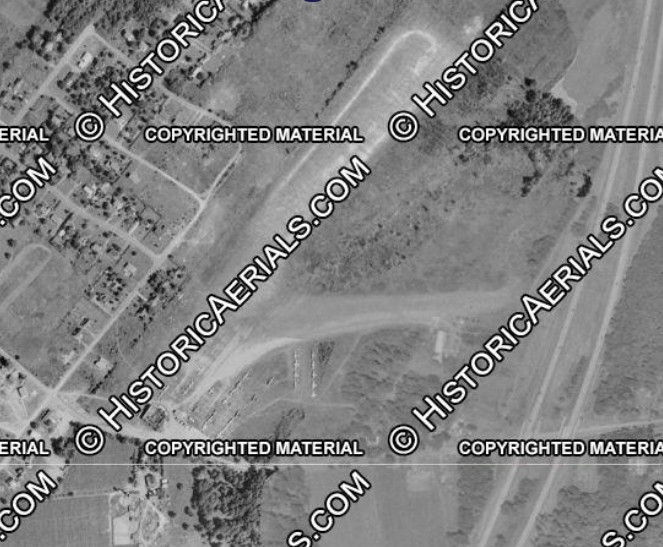
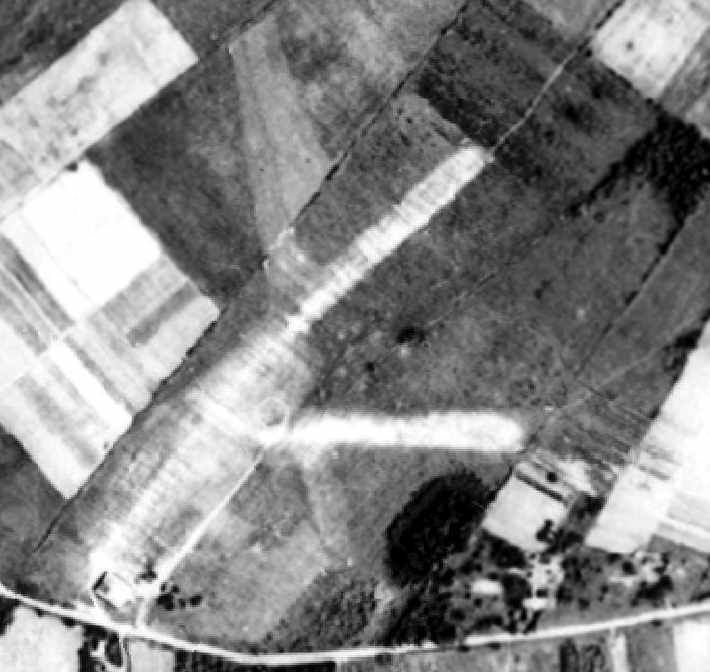
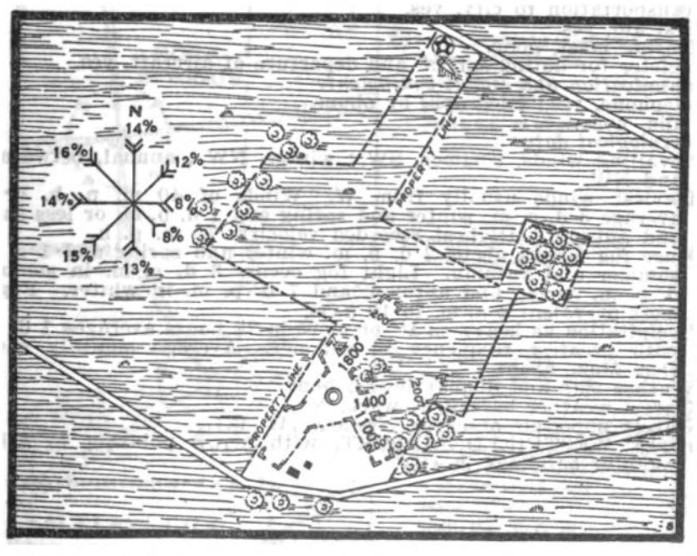
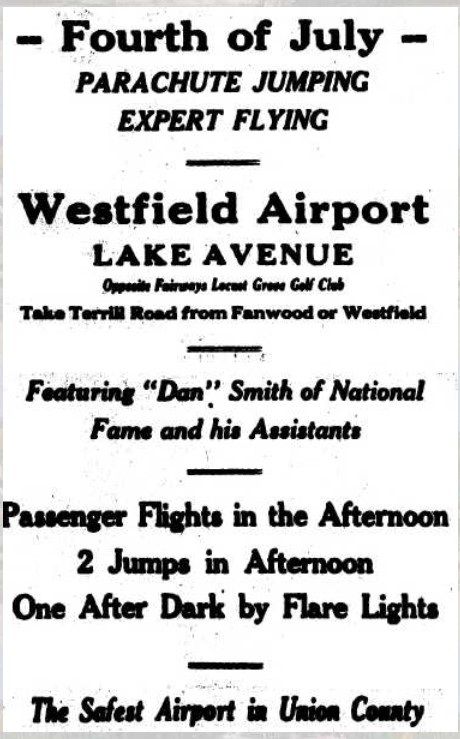

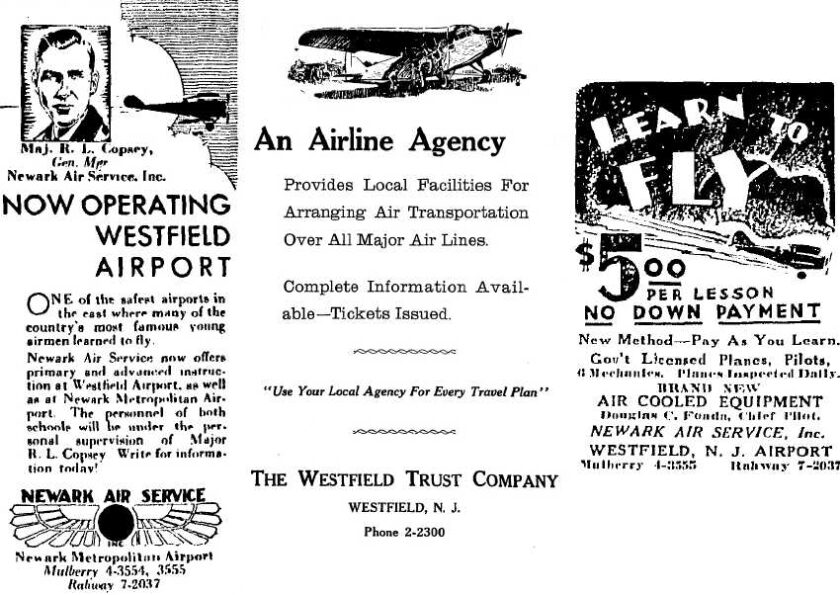
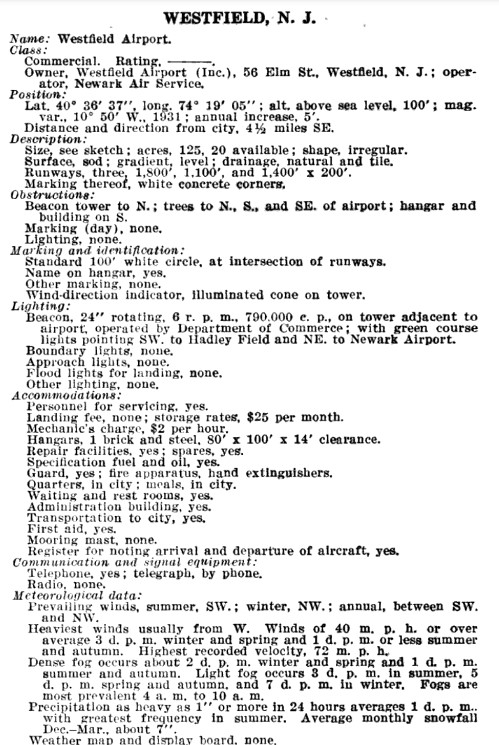

Aside from Paul Hadley, the original owner, the Westfield Airport was leased by a few notable entities during its operation, particularly for airmail and commercial purposes.
U.S. Postal Service
The U.S. Postal Service (USPS) was one of the primary lessees of Hadley Field. In the 1920s and 1930s, the USPS used the airport as a crucial hub for airmail services. The airport was chosen explicitly for overnight airmail operations and was a relay point between Washington, D.C., and New York. The USPS’s use of the airport during this period made it one of the busiest airmail centers in the region. These entities, particularly the USPS, played a crucial role in keeping Hadley Field operational until the 1940s when its significance declined due to the expansion of larger airports like Newark Liberty International.
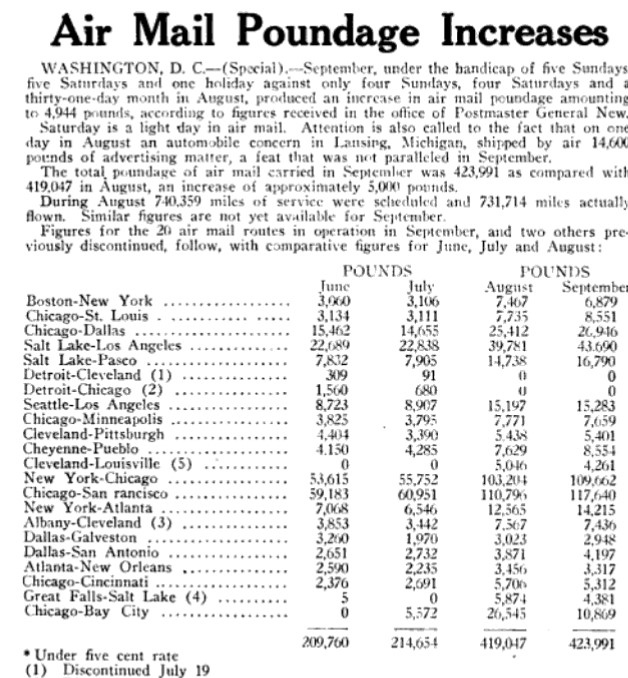
Columbia Air Liners (1930s)
Columbia Air Liners, a regional air service, leased part of the airport during the 1930s. They were among the early commercial aviation companies that provided passenger flights out of Hadley Field. The airline helped transition the airfield from a primarily postal hub to a more general aviation center, serving private flights and charter services.
Curtiss-Wright Flying Service
Curtiss-Wright Flying Service, a major aviation company in the early 20th century, also leased space at Hadley Field. They provided pilot training and aircraft maintenance services at the airport, contributing to the field’s growth as a training ground for early pilots. Curtiss-Wright’s presence further established Hadley Field as a vital aviation center during the interwar period.
World War II and Decline
Hadley Field’s operations waned in the late 1930s and early 1940s. World War II shifted focus to larger military and commercial airfields, and by the end of the war, Hadley Field had significantly reduced its operations. As newer, larger airports like Newark Liberty International Airport expanded, the need for smaller airports like Hadley Field diminished.
Post-War Era and Closure
In the post-war era, the rise of suburban development in Westfield, Edison, and Clark created pressure on small airports like Hadley Field. Small, privately owned airports like Westfield often close for various reasons, such as financial difficulties, changes in land use, or declining demand for general aviation services. Also, housing demand and the increasing complexity of air travel regulations have made it challenging for small, local airports to continue. Eventually, the airport’s land was sold, and the airfield closed.
A 11/23/55 article entitled “Westfield Airport To Close Sunday” (courtesy of Mark Hess) observed:
“After 27 years of operation, the Westfield Airport will close its operations Sunday. Rick Decker, airport operator, stated he has already transferred most of his activities to Somerset Hills Airport, Basking Ridge (see story link at bottom).
The builder, Sommer Brothers Construction Co., plans to construct 93 homes on the site, most of which are reported already sold.”
By 1957, most of the airport’s infrastructure had already been removed, and the land was redeveloped for residential and commercial purposes. Today, the area is densely populated with homes and businesses, with little evidence that it once housed one of New Jersey’s early aviation hubs.
Legacy
Although the Westfield NJ Airport no longer exists, its legacy remains essential in New Jersey’s role in developing aviation in the United States. Hadley Field is remembered for contributing to early airmail service, pioneering night flights, and training early aviators. Some local history societies still commemorate the site for its aviation heritage.
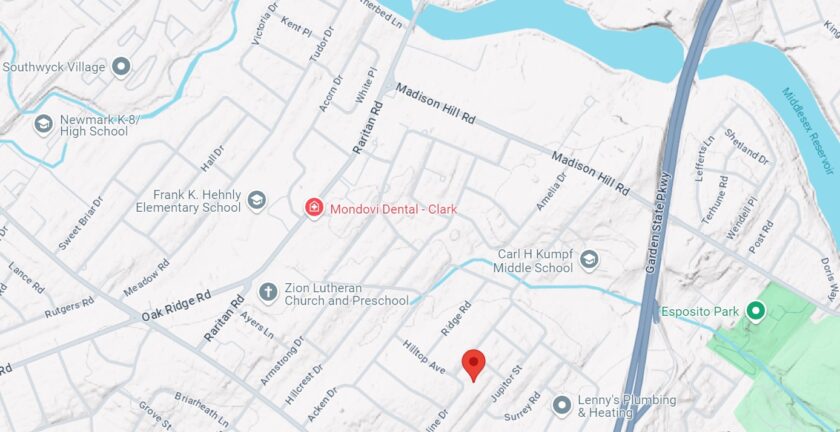
Related MLH History
Follow along with other Westfield NJ History research – Click Here
I really enjoyed your article about the old airport. If you would like more information you might go speak with Les Bartell at Bartell Garden Center on Central Avenue, Clark NJ. Les’s father told me about the airport years ago. Mr. Bartell used to fly his old plane out of that air strip. Surely Les has some interesting memories of his father’s flying days. Les is a wealth of information about the area and may have some good stories for you…..